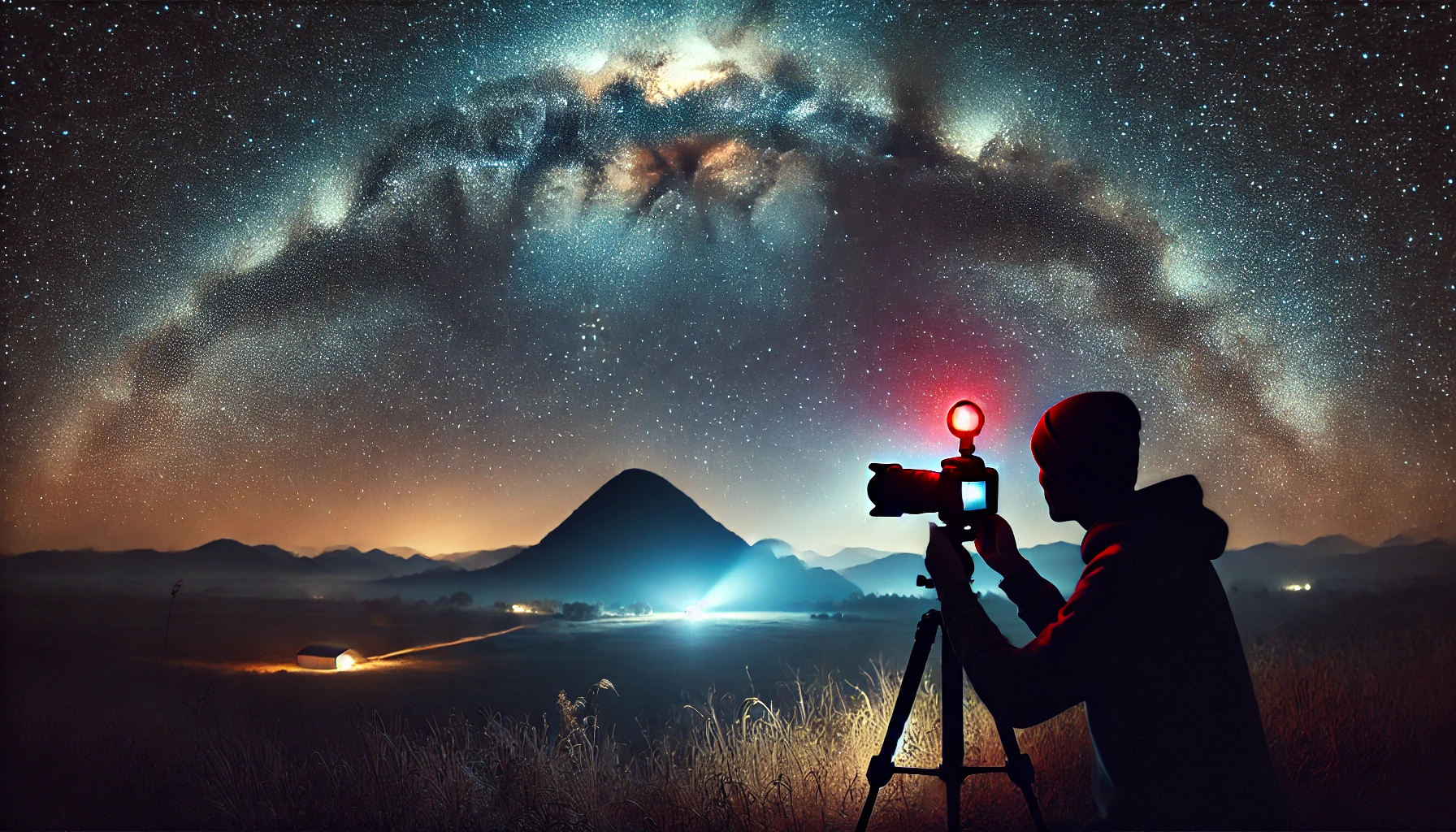Astrophotography captures the beauty of stars, constellations, and celestial events. Photographing the night sky requires specific techniques, patience, and the right equipment. Here’s a guide to help you create stunning images of the cosmos.
1. Choose the Right Location
Find a dark location away from city lights for minimal light pollution. National parks and rural areas are ideal for astrophotography.
Pro Tip: Use apps like Light Pollution Map or Dark Sky Finder to locate the best spots.
2. Use the Right Gear
- Camera: A DSLR or mirrorless camera with manual settings is essential.
- Lens: A wide-angle lens (e.g., 14mm or 24mm) with a wide aperture (e.g., f/2.8) works best.
- Tripod: Keeps your camera stable during long exposures.
Pro Tip: Bring a remote shutter release or use your camera’s timer to avoid vibrations.
3. Adjust Camera Settings
- Aperture: Use the widest aperture your lens allows.
- Shutter Speed: Start with 15–20 seconds for stars. Avoid longer exposures to prevent star trails unless intended.
- ISO: Set between 1600–3200 for a bright, noise-free image.
Pro Tip: Use the 500 rule to calculate shutter speed: divide 500 by your lens’s focal length (e.g., 500 ÷ 14mm = ~35 seconds).
4. Focus on Infinity
Switch to manual focus and set your lens to infinity. Use live view to fine-tune focus on the brightest star or distant light.
Pro Tip: Attach gaffer tape to your lens ring to keep focus steady during the shoot.
5. Experiment with Star Trails
For creative star trail photos, use long exposures or stack multiple shots in post-processing. Set your camera to bulb mode and use a remote shutter for exposures lasting several minutes.
Pro Tip: Include foreground elements like trees or mountains to add depth to star trail compositions.
6. Enhance with Post-Processing
Astrophotography benefits greatly from editing. Use software like Lightroom or Photoshop to adjust brightness, contrast, and noise levels.
Pro Tip: Use stacking software (e.g., DeepSkyStacker) to reduce noise and enhance detail.
Checklist for Night Sky Photography
- Have you chosen a location with minimal light pollution?
- Are your settings optimized for the stars or celestial event?
- Have you included an interesting foreground for depth and scale?
Astrophotography allows you to capture the wonder of the universe and create awe-inspiring images. With practice and patience, you can master the techniques to photograph the night sky beautifully.
